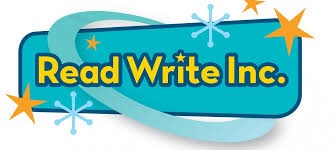Rapid, early coverage of phonic knowledge and skills will allow the pupils to have a firm foundation for decoding going into Key Stage 1 where explicit phonics teaching will continue. Teachers will use the strategies of segmenting and blending, recognising common digraphs and consonant clusters and then moving to segmenting words using knowledge of prefixes, root words and suffixes.
As children move through Key Stage 2, phonics teaching will continue to be explicitly taught in the Autumn term in Year 3. Fluent reading is modelled through echo reading and shared reading of whole class and group texts in Guided Reading, English and Foundation lessons and class readers.
Children with reading difficulties are identified early, assessed through YARC and HfL criteria, being supported one-to-one or in a small, guided group.
Read Write Inc – Our Phonics Scheme

The Government strongly recommend the use of synthetic phonics when teaching early literacy skills to children. Synthetic phonics is simply the ability to convert a letter or letter group into sounds that are then blended together into a word.
Here at the Highwood Primary School, we are using the Read Write Inc (RWInc) programme to get children off to a flying start with their English. RWInc is a method of learning based upon letter sounds and phonics, and we use it to aid children in their reading and writing.
Reading opens the door to learning. A child who reads a lot will become a good reader. A good reader will be able to read more challenging material. A child who can read more challenging material is a child who will learn. The more a child learns, the more he or she will want to find out.
The children are assessed regularly and grouped according to their ability.
For further guidance and information about Read Write Inc. Phonics, visit the link below.
https://www.ruthmiskin.com/parents/
The Phonics Screening Check
Supporting your child with phonics
- Introduction to Read Write Inc.
- Sets 1,2, 3 sounds for Reception and parents in Year 1 and 2.
- Listening to your child read and reading stories for parents in Nursery, Reception, Years 1 & 2.
Spelling
At Highwood, we recognise the importance of teaching our children to spell accurately. Children who can spell feel confident and are able to write with enjoyment. We want our children to be equipped with a range of strategies for learning spellings and to be able to apply their strategies when spelling words in their independent writing.
In Early Years and KS1 children are taught to spell words alongside our phonics programme Read Write Inc.
In Year 3, spellings will be taught alongside Read, Write Inc. phonics scheme, which will ease the children’s transition to learning Key Stage 2 spelling rules.
To help support our teaching of spelling, we use Spelling Shed for children in Years 3– 6. The children have daily spelling lessons for 10-15 minutes which incorporate phonics, morphology, and the etymology of spelling, this will allow children to apply their spellings strategies in their independent writing.

In each lesson, children will complete activities that require them to apply their given spelling rule for the week, these will include splitting their spelling words into syllables and phonemes as well as dictated sentences. There will no longer be a weekly test, as children will be encouraged to apply the spelling rules they have learnt in their writing across the curriculum.
Children will also be encouraged to learn “challenge words” which are the given word lists for years 3 and 4 and years 5 and 6 from the national curriculum. These are words that children often use and frequently misspell.
To support your children with spellings at home, parents/carers are encouraged to assist their children in practicing their spellings daily using the edshed website or app, as well as identifying other words that fit their weekly spelling rule, such as in their reading. The website offers children a variety of fun games to practice their spellings with differing levels of challenge.
If you have any further questions about the new spelling scheme or weekly spellings, please speak to your child’s class teacher.
